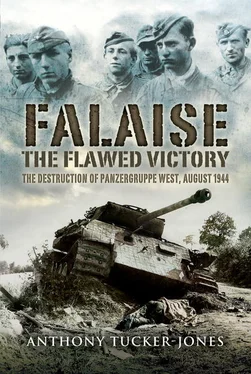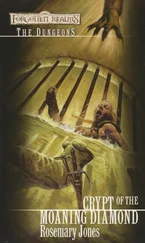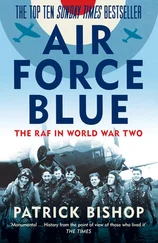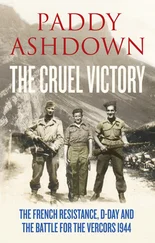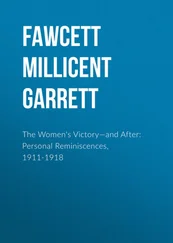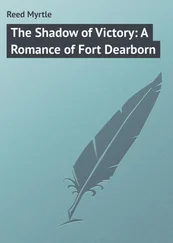Field Marshal Bernard Law Montgomery was well aware of these tensions; in April 1944 he had briefed his commanders, commenting:
Some of us here know Rommel well. He is a determined commander and likes to hurl his armour into battle. But according to what we know of the chain of command, the armoured divisions are being kept directly under Rundstedt and delay may be caused before they are released to Rommel. This fact may help us, and quarrels may arise between the two of them.
This argument between Rundstedt and Schweppenburg on the one hand and Rommel on the other resulted in an unwieldy compromise, with Rommel retaining command of 2nd (beyond the Somme), 21st and 116th Panzer Divisions (beyond the Seine), and the 1st SS and 12th SS Panzer Divisions; and Panzer Lehr remaining under von Rundstedt’s authority. The reserves constituted part of Panzergruppe West. The latter attempted to avoid frittering away its panzers by getting OB West to issue an order forbidding the piecemeal diversion of elements of the panzer divisions; once the reality of the invasion set in this order was soon abandoned.
The reserves though could not be deployed without the approval of OKW. Hitler as C-in-C exercised command through his Chief of Staff, Field Marshal Wilhelm Keitel, and Chief of Operations Staff, General Alfred Jodl. This meant that the release of C-in-C West’s reserve panzer force was unlikely to happen in a hurry.
Even the forward deployment of a single panzer division caused much debate. General Günther Blumentritt, von Rundstedt’s Chief of Staff noted:
There were prolonged arguments as to where the 21st Panzer Division should be placed. Field Marshal von Rundstedt would have preferred it to the south of St Lô, behind the Cherbourg [Cotentin] Peninsula. But Rommel chose to put it nearer the coast and on the other lank, close to Caen. This meant that it was too near the coast to be really available as a reserve for the sector as a whole.
Rommel’s intuition was to prove correct, although the ultimate issue of where the rest of the panzer divisions should be best placed was never really resolved, nor in reality could it be. It is strange, given the lessons the Germans had provided Europe about the power of massed armour, that their panzer divisions should be scattered from Bordeaux to Belgium.
Prior to D-Day it was hard for the Germans to hide their troop and panzer movements along France’s roads and railways. In particular Route Nationale 13 followed the Normandy coastline from Cherbourg in the west to Caen in the east. Before, during and after the Normandy campaign, the Allied air forces and Special Forces did all they could to interrupt the Germans’ lines of communication. In the run up to D-Day, fighter-bombers and bombers of the British 2nd Tactical Air Force and the US 9th Air Force conducted an offensive against German rolling stock across northern Europe. Carried out during the last week of May, its aim was to hamper Hitler’s ability to reinforce his armies in northwest France once Operation Overlord was underway. Between 1 March and 6 June 1944 thirty-six marshalling yards in northern France and Belgium were bombed 139 times.
Attacks on the rail bridges over the Seine and Meuse had commenced on 7 May 1944, also designed to prevent the Germans bringing up reinforcements. The initial attacks on the Seine included Mantes-Gassicourt and Oissel, but from the end of the month onwards ten rail and fourteen road bridges were targeted as a top priority. By D-Day, from Conflans to Rouen all the rail bridges across the Seine were down.
One failing of this campaign was not destroying the bridges over the Loire at Saumar and Tours. Had this been achieved it would have greatly hampered the 2nd SS Panzer Division and 17th SS Panzergrenadier Division’s move north to join the battle in Normandy.
Allied light bombers conducted low-level incendiary raids on German targets, in particular airfields and communication centres, they also carried out long-range night-time raids. During the period 1 May–5 June 1944, thirty-six Luftwaffe airfields from the Netherlands to Brittany were targeted. Similarly low-level fighter-bomber sweeps were made over occupied Europe against targets of opportunity. Over the English Channel, daylight aircraft patrols were conducted to prevent the movement of light shipping and coastal convoys.
On the ground, the French resistance also coordinated their efforts with the British Special Operations Executive (SOE) and American Office of Strategic Services (OSS) to hinder the German movement of reinforcements by road and rail toward Normandy once the Allied invasion was underway. In February 1944 General Charles de Gaulle created the French Forces of the Interior (FFI) under General Koenig to unite all the various resistance groups, which would bravely harass German troop movements.
Colonel Passy (Captain André Charles Lucien Dewavrin) headed de Gaulle’s Free French Intelligence Service and established a network of spies watching developments along the defences of Hitler’s so called Atlantic Wall. Dewavrin, ironically a former Assistant Professor of Fortifications at Saint-Cyr, was not particularly interested in the concrete of the German defences but rather their radar installations. The French resistance set up a transmitter network throughout Normandy, particularly the Caen area, Bayeux, Grandcamp and Ste Mére-Èglise.
Just two days before D-Day Rommel, reassured that the tides would not be suitable for an invasion, departed from his HQ at the Chateau Roche Guyon outside Paris for his home near Ulm on the Danube, leaving his Chief of Staff, Lieutenant General Hans Speidel, in charge. General Dollmann was in Rennes hosting a wargame and Sepp Deitrich was in Brussels.
Sometime after 0100 on 6 June 1944, a bleary-eyed Admiral Hoffman was roused from his bed at the HQ of Chief of Operations Naval Group West in the Bois de Boulogne, Paris. Chief of Staff Hoffman found himself leafing through a series of reports from the remaining naval radar stations. Despite the Allies’ best efforts there could be no hiding the vast fleet approaching the Normandy coast and Hoffman turned to his men: ‘this can only be the invasion fleet. Signal to the Führer’s headquarters the invasion is on’.
Rundstedt recalled:
At four o’clock in the morning, three hours after I received the first reports of the invasion, I decided that these landings in Normandy had to be dealt with. I asked the Supreme Command in Berlin for authority to commit these two divisions into the battle.
Although Panzer Lehr and the 12th SS Panzer Divisions were under my command, I could not move them until I had received permission from Berlin. Berlin replied that it was still uncertain as to whether or not these first assaults were the main Allied efforts or merely a diversion.
The 1st SS, 12th SS and Panzer Lehr Panzer Divisions and the 17th SS Panzergrenadier Division could not be released without Hitler’s express permission. By 0600 von Rundstedt was convinced that the invasion was the real thing and his Chief of Staff, General Blumentritt, requested that the panzer reserves be released to C-in-C West.
Rather surprisingly, the German High Command were not unduly alarmed by all this activity. Most incoming information was to a large extent ignored. Berlin dithered, still half expecting an attack across the Pas de Calais. Jodl was more concerned about the situation in Italy, where Rome had just fallen to the Allies, and the anticipated summer Soviet offensive on the Eastern Front; vague reports from Normandy did not seem that serious.
On hearing the news, Rommel dutifully sped back but did not arrive until the afternoon of D-Day and was unable to exert any influence on the swift commitment of the panzers. It was not until the end of 6 June that the Germans finally began to move their panzer reserves toward the Allied bridgehead. The 2nd Panzer Division moved west from Amiens, while the 9th SS and 10th SS Panzer Divisions, part of the powerful II SS Panzer Corps, would be summoned from the Eastern Front five days later.
Читать дальше
